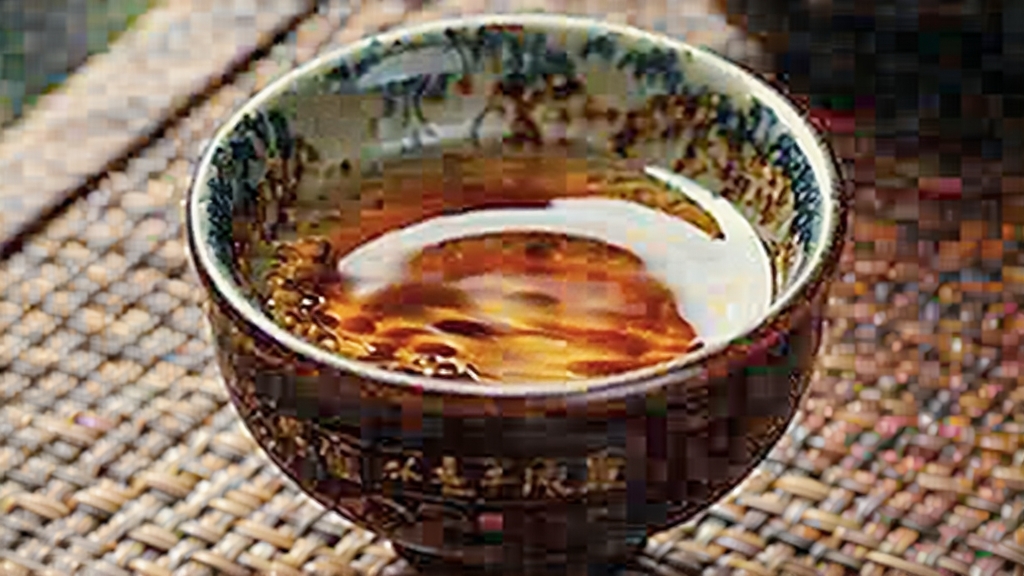
Few beverages can claim to have financed dynasties, pacified frontiers and still be poured in nomad yurts thirteen centuries later. Fu brick tea—pronounced “foo” and literally “Fu zhuan cha”—is one of them. Compressed into glossy black rectangles that weigh exactly one kilogram, stamped with the Chinese character “Fu” (blessing) and freckled inside with a living constellation of golden-yellow fungi, this Hunan-born dark tea is the quiet genius of post-fermentation. While pu-erh hogs the limelight, Fu brick has spent 1,300 years perfecting the art of microbial alchemy, turning coarse mountain leaves into liquid velvet that nomads called “black gold” and Tang dynasty accountants listed beside salt and silk on imperial tax scrolls.
History: From Frontier Currency to Modern Wellness Icon
The story begins during the Tang (618-907 CE) when court officials needed a lightweight, non-perishable good to trade for warhorses with Tibetan and Uyghur tribes. Sun-dried green tea from the humid hills of Anhua County, Hunan, was steamed, rammed into bamboo husks and carried 3,000 km west. Along the freezing caravan routes the tea slowly oxidised, arriving darker, sweeter and suddenly indispensable to plateau diets that lacked vegetables. By the Song dynasty the state had institutionalised the trade through the “Tea-Horse Bureau”; one Fu brick exchanged for one Tibetan steed, a ratio so favourable that Song generals defended the route as fiercely as any fortress.
Ming regulations (1368-1644) standardised the brick at 1.125 kg, stamped each with the reign mark and sealed warehouses in the county town of Jingyang, giving rise to the name “Jingyang Fu brick.” Caravans departing Xian shouldered 50,000 bricks a year, a figure that doubled under the Qing when the Kangxi Emperor granted Anhua county exclusive tribute status. In 1873 the first Russian caravans diverted some cargo northward; by 1910 Fu brick constituted 60 % of the Sino-Russian tea trade at the Mongolian border post of Kyakhta.
The 20th century brought turmoil—warlords, Japanese occupation, the collapse of the horse-road—but also science. In 1953 Hunan Tea Company researchers isolated the dominant microbe responsible for the tea’s golden spots, naming it Eurotium cristatum, affectionately “golden flowers” (jin hua). Subsequent studies revealed that these flowers produce the unique polysaccharides and statin-like compounds credited today with lipid-lowering and gut-microbiome benefits, catapulting Fu brick from caravan staple to wellness darling.
Terroir & Leaf: Why Only Anhua Can Birth Golden Flowers
Anhua county sits where the Wuling Mountains funnel moist subtropical air into a 90 % humidity cauldron shrouded in cloud 280 days a year. The indigenous Yun-Tai large-leaf cultivar, classified as a “semi-wild arbor,” develops leaves 30 % thicker than the average tea bush, storing sugars and amino acids that feed the fungi later. Spring picking follows a strict “one bud three leaves” standard; anything coarser yields harsh liquor, anything younger collapses under the weight of fermentation. Farmers pluck at dawn when leaf turgor pressure peaks, then race the baskets downhill before the sun raises enzymatic activity.
Craftsmanship: 29 Steps That Summon the Golden Flowers
Fu brick production is a calendar in itself, beginning in Grain Rain and ending in Minor Heat.
- Fixing: 200 kg batches are flash-fired at 280 °C in iron woks for four minutes, just enough to kill green enzymes while preserving leaf toughness.
- Rolling: A 45-minute machine roll ruptures 60 % of cell walls without breaking veins, ensuring later fungal penetration.
- Piling: The “dark tea smell” is born here. Leaves are heaped 70 cm high, sprayed with Anhua mountain spring water (pH 6.8) and covered in hemp cloth. Internal temperature climbs to 55 °C within 18 hours; every four hours a team “turns the pile,” aerating and re-wetting. After 24 hours the leaf turns chestnut-brown, amino acids drop 30 % and polyphenols oxidise into theaflavins.
- Drying: Wood-fired ovens hold 75 °C for six hours, reducing moisture to